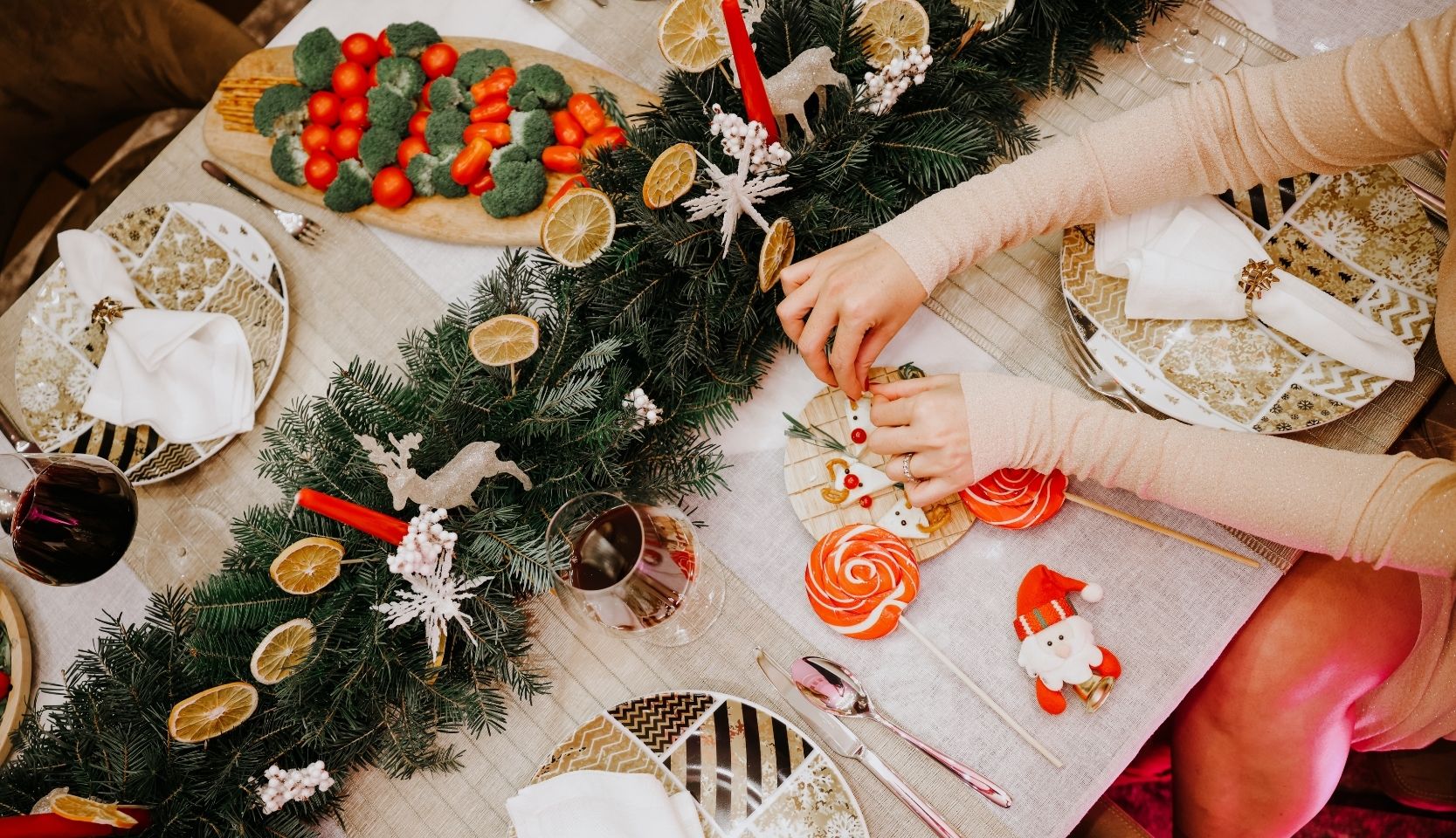
05 Nov Culinary expedition – The culinary colours and aromas of December
At Eat2Gather, we closely follow culinary trends and developments. We enjoy exploring innovative concepts, flavour combinations and sensory applications. In modern gastronomy, the total experience is no longer just about taste: it is, as they so beautifully put it, about multisensory enjoyment: tasting, smelling, seeing, hearing and feeling. Smell and colour play an increasingly important role in creating a special atmosphere. More and more restaurants and food concepts are consciously using these elements, from subtle aromas to colourful plate presentations and surprising styling.
For example, you often see fresh herb plants on the table, smoky accents that welcome you as soon as you enter, and dishes that play with contrasting shapes and shades. Sometimes it takes very little: the smell of freshly baked bread or a strikingly coloured sauce. There is a lot of experimentation with these sensory mood enhancers.
December is a month full of rituals, symbolism and nostalgia. Scents and colours take us back to moments, people and emotions. Even before the first bite. Think of stews, pine needles, hot chocolate or gingerbread: they immediately evoke warmth, anticipation and togetherness. Psychologists call this the Proust effect: scent evokes memories and emotions more strongly than any other sense.
Culinary aroma and colour tips for this time of year
We would like to inspire you with sensory ideas for creating a true December experience.
The scent palette of December
These aromas immediately set the tone for a winter atmosphere: at the table, during a Christmas drink or dinner, or at the end-of-year event:
- Cinnamon – warm nostalgia, think apple pie, stewed pears, winter desserts
- Orange & cloves – classic in mulled wine, tea and pastries, but also great in cocktails
- Pine green – fresh, earthy and symbolic of winter and new beginnings
- Chocolate – soft, comforting and irresistible to share
- Fresh bread, biscuits or spices – the scent of home and togetherness
The colour palette of December
Just as scent sets the mood, so does colour. Colours can provide warmth, add excitement, emphasise festivity or, conversely, bring tranquillity. Commonly used winter shades are:
- Deep red – passion and richness (beetroot, cranberry, red wine sauce, Christmas decorations)
- Pine green – nature and winter forest (herbs, green oil, cavolo nero, table decorations)
- Gold & champagne – sparkle and luxury (tableware, candles, glassware, decorative accents)
- Earth tones – security (pumpkin, mushrooms, chestnuts, linen)
- White – purity and tranquillity (creamy sauces, icing sugar, white table linen)
Did you know that contrasting colours on the plate stimulate the appetite? That’s why chefs like to work with flowers, herb oils, colourful sauces and natural pigments.
How to create culinary moments with scent and colour
- Add colour to the plate – combine deep winter tones with fresh herbs or citrus accents
- Use natural sources of scent – such as zest, eucalyptus, cinnamon sticks or fresh herbs
- Play with spices – gently simmer citrus, star anise or cinnamon for a subtle winter fragrance
- Serve dishes with memories – a classic with a story always touches the heart
- Choose a colour palette for decorating the room and table – think wood, linen, pine greenery and soft candlelight
A sensory December experience
At Eat2Gather, we believe that food only becomes truly unforgettable when all the senses are involved. During our winter food walks, Christmas workshops and shared dining evenings, the spaces are filled with warming aromas, seasonal colours and dishes prepared with care.